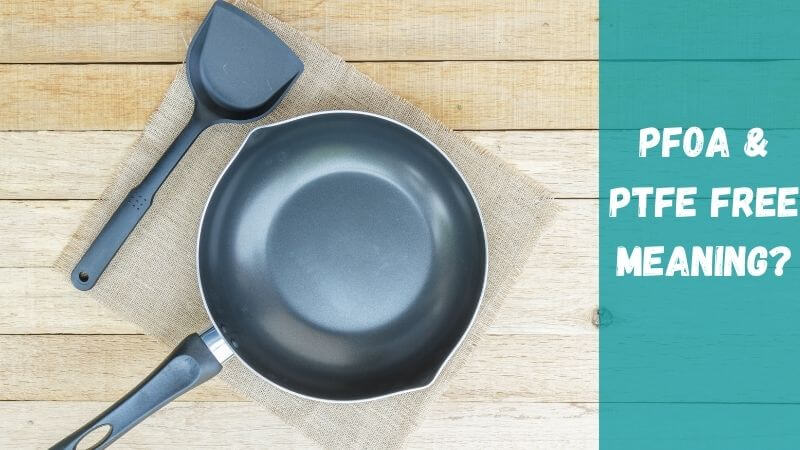PFOA and PTFE are two common chemicals that are used in a variety of products, from cookware to clothing. While they have a variety of uses, they can also be harmful to human health. In recent years, there has been an increased focus on finding products that are free of these chemicals. Here, we will take a look at what PFOA and PTFE free means and why it is important.
What is PFOA?
Perfluorooctanoic acid ( PFOA) is an organic compound that is used in the production of fluoropolymers. PFOA is a man-made chemical that does not occur naturally in the environment.
It is a synthetic, perfluorinated chemical that has been used in a variety of industrial and consumer products, including non-stick cookware, stain-resistant fabrics, and fire-fighting foams. PFOA exposure has been linked to a variety of health concerns, including cancer, thyroid disease, and decreased immunity.
What does PFOA free mean?
Products that are advertised as PFOA free means that they do not contain the synthetic chemical perfluorooctanoic acid. PFOA has been linked to health problems in animals, and is thought to be a human health hazard as well. Some companies have voluntarily stopped using PFOA in their products, but there is no federal regulation requiring them to do so.
What is PTFE or Teflon?
PTFE is polytetrafluoroethylene, a synthetic fluoropolymer of tetrafluoroethylene that has numerous applications. The well-known brand name of PTFE-based formulas is Teflon by Chemours.
PTFE is a thermoplastic polymer that is made from tetrafluoroethylene. It is a white, solid plastic with a density of 2.2 to 2.3 g/cm3. PTFE has a high melting point of 327°C (621°F) and a low coefficient of friction.
What does PTFE free mean?
PTFE free means that a product does not contain polytetrafluoroethylene. The main advantage of PTFE is its inertness. It is resistant to attack by almost all chemicals and is insoluble in all solvents. PTFE has a very low coefficient of friction and is used as a non-stick coating for pans and other cookware. It is also used in coatings for other non-stick applications such as in Gore-Tex fabric.
PTFE is considered to be a safe material, however some health concerns have been raised about its potential to release toxins when heated to high temperatures. These concerns are typically associated with products that are not PTFE free.
The Dangers of PFOA and PTFE
Danages of PFOA
PFOA has been linked to several serious health problems, including cancer, thyroid disease, high cholesterol, pregnancy-induced hypertension, immune system damage, liver damage, kidney damage, reproductive problems, learning and memory difficulties, and behavioral changes. PFOA has been linked to several serious health problems, including:
- Cancer
- Thyroid disease
- High cholesterol
- Pregnancy-induced hypertension
- Immune system damage
- Liver damage
- Kidney damage
- Reproductive problems
- Learning and memory difficulties
- Behavioral changes
Dangers of PTFE
PTFE is a non-reactive, hydrophobic plastic with a unique set of properties. It is often used in the food and beverage industry in coatings, seals, and gaskets.
PTFE is considered to be a safe material for food contact. However, there are some concerns about the safety of PTFE. One concern is that PTFE can release perfluorooctanoic acid (PFOA) when it is heated. PFOA is a synthetic chemical that is used in the production of PTFE.
PFOA has been linked to cancer in animals. Another concern is that PTFE can leach chemicals into food. PTFE coatings have been shown to leach chemicals into food when they are heated.
How to Avoid PFOA and PTFE
How to Avoid PFOA
There are many ways to avoid PFOA. Here are some recommendations:
- Limit your consumption of food packaged in certain types of containers. PFOA has been found in the lining of some food packaging, such as microwave popcorn bags, fast food wrappers, and pizza boxes.
- Avoid using non-stick cookware, or cookware that has been treated with a fluorinated chemical.
- Avoid using stain-resistant and water-repellent products. Many of these products contain PFOA.
- Avoid using products that contain perfluorinated chemicals. These chemicals are used in a variety of products, including carpeting, upholstery, clothing, and cookware.
- If you must use products that contain perfluorinated chemicals, follow the manufacturer’s instructions carefully.
- Do not allow children to play with products that contain perfluorinated chemicals.
How to avoid PTFE?
There is no sure way to avoid Teflon, as it is found in many common household items. However, avoiding non-stick cookware and using alternatives such as cast iron or stainless steel may help to reduce exposure. Additionally, using a dust mask and gloves when handling PTFE products can help to minimize skin contact and inhalation, respectively. Finally, always thoroughly washing your hands after coming into contact with PTFE will help to remove any residual particles.
Related article
- Read our article on the best PTFE-free air fryer.
The Benefits of PFOA and PTFE Free
The Benefits of using PFOA free kitchen appliances:
- No exposure to harmful chemicals
- Less chance of developing health problems associated with PFOA exposure
- Eco-friendly
- Safe for use around children and pets
The Benefits of using Teflon free kitchen appliances:
- PTFE free kitchen appliances are less likely to release harmful chemicals into the air.
- They are less likely to cause skin irritation or other health problems.
- PTFE free kitchen appliances are easier to clean and maintain.
- These appliances can help to reduce environmental pollution.
Conclusion
When use everyday kitchen appliances such as an air fryer or a dehydrator for dehydrating fruits and vegetables. It is wise to choose the appliances free from PFOA and PTFE. You would not like to risk your life to consume your favorite food. I tried to enlighten you about the commonly used terms PFOA and PTFE free. I hope it will help you in future to decide on the best kitchen appliance.

